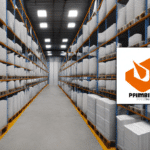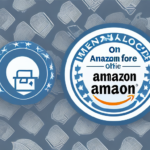Seller Fulfilled Prime Explained: What You Need to Know
If you're an Amazon seller, you've likely heard of Seller Fulfilled Prime (SFP). But what exactly is it, and how does it work? In this comprehensive guide, we'll delve into everything you need to know about SFP, including its advantages and disadvantages, qualification criteria, best practices for inventory management and optimization, and much more. Let's dive in.
What is Seller Fulfilled Prime?
Seller Fulfilled Prime is a premium program offered by Amazon that allows eligible sellers to list their products with the Prime badge without utilizing Amazon's own fulfillment services. Instead, sellers manage the storage, packing, and shipping of their products, adhering to Amazon's stringent requirements for delivery speed, reliability, and customer service.
By participating in SFP, sellers can access Amazon's vast Prime-eligible customer base, offering benefits like free two-day shipping and enhanced visibility in search results, all while maintaining control over their fulfillment operations and potentially reducing costs compared to Amazon's Fulfillment by Amazon (FBA) service.
How Does Seller Fulfilled Prime Work?
The SFP process involves several key steps:
- Enrollment: Sellers must enroll in the program and meet Amazon's performance metrics, including shipping speeds, order accuracy, and customer satisfaction ratings.
- Product Listing: Eligible products are listed as Prime-eligible. Sellers must ensure their products comply with Amazon's packaging and shipping standards.
- Order Processing: Orders are received through Amazon's platform. Sellers must process and ship orders within the stipulated delivery window using approved carriers.
- Customer Service: Sellers handle customer inquiries and resolve issues promptly, maintaining high levels of customer satisfaction.
- Performance Monitoring: Sellers must consistently meet Amazon’s performance standards to retain Prime eligibility and avoid penalties.
Advantages of Using Seller Fulfilled Prime
Participating in SFP offers several benefits:
- Cost Efficiency: By managing fulfillment in-house, sellers can potentially reduce fulfillment and storage fees associated with FBA.
- Greater Control: Sellers have direct oversight of their inventory, packaging, and shipping processes, allowing for customization and flexibility.
- Access to Prime Customers: Leveraging the Prime badge can increase product visibility and attract Amazon’s loyal Prime customer base.
- Enhanced Profit Margins: Sellers can optimize pricing strategies and reduce dependency on Amazon’s fulfillment costs, potentially improving profit margins.
Disadvantages of Using Seller Fulfilled Prime
However, SFP also presents certain challenges:
- Increased Operational Burden: Managing storage, packing, and shipping requires significant time and resources, potentially diverting focus from other business areas.
- Higher Risk: Failing to meet Amazon’s performance standards can result in penalties or suspension from the program, negatively impacting sales and reputation.
- Efficiency Demands: Maintaining the required shipping speeds necessitates reliable logistics and potentially higher shipping costs compared to bulk shipping with FBA.
How to Qualify for Seller Fulfilled Prime
To qualify for SFP, sellers must meet the following criteria:
- Hold a Professional selling account in good standing and complete the SFP enrollment process.
- Maintain a consistent track record of fast and reliable shipping, with a minimum of 50 Prime-eligible orders shipped per month and specific benchmarks for cancellation and late shipment rates.
- Adhere to Amazon's packaging and labeling requirements, including proper barcoding and package dimension standards.
- Utilize carriers that meet Amazon's delivery performance criteria and provide tracking information for each shipment.
- Offer competitive shipping speeds and policies that align with both Prime and non-Prime orders, often requiring free shipping options.
- Comply with Amazon’s policies and excel in customer service, ensuring prompt responses to inquiries and issue resolution.
Requirements for Using Seller Fulfilled Prime
Beyond eligibility, sellers must adhere to specific SFP guidelines:
- Use Amazon's Buy Shipping services to purchase shipping labels, access discounted rates, and provide tracking information.
- Manage daily shipping label purchases and related costs through the seller account, ensuring accurate billing.
- Follow Amazon’s packaging standards, utilizing Eco-friendly options like Frustration-Free Packaging or Ships In Own Container (SIOC).
- Respect Amazon’s return policies, allowing 30-day returns for customers and providing pre-paid return labels when necessary.
- Ensure compliance with regional and international laws related to product safety, labeling, and shipping practices.
Tips for Successful Implementation of Seller Fulfilled Prime
- Invest in Robust Order Processing Systems: Utilize tools like barcode scanners and automated packaging solutions to streamline operations.
- Set Realistic Shipping Policies: Establish shipping speeds and policies that are achievable and competitive, ensuring consistency in delivery times.
- Maintain Exceptional Customer Service: Respond promptly to customer inquiries and resolve issues efficiently to uphold high performance metrics.
- Monitor Inventory Levels: Use inventory management systems to track stock levels, prevent overselling, and avoid stockouts.
- Optimize Product Listings: Enhance product descriptions, images, and keywords to improve visibility and attract Prime customers.
Cost Comparison: Fulfillment by Amazon vs. Seller Fulfilled Prime
Choosing between SFP and FBA involves a careful analysis of costs and benefits:
- SFP: Lower fulfillment fees but requires investment in fulfillment infrastructure and may involve higher shipping and labor costs.
- FBA: Higher storage and fulfillment fees but offers greater scalability, convenience, and access to Amazon’s logistics network.
According to a recent Amazon FBA vs. SFP Cost Analysis, sellers can determine which fulfillment method aligns best with their business model based on specific cost structures and operational capabilities.
Best Practices for Managing Inventory with Seller Fulfilled Prime
- Automate Inventory Monitoring: Implement systems that track sales velocity and lead times to adjust inventory levels proactively.
- Regularly Assess Product Performance: Analyze sales data to optimize pricing, promotions, and inventory sourcing strategies.
- Keep Inventory Data Up-to-Date: Ensure barcodes, SKUs, and product descriptions are current to prevent errors and discrepancies.
- Utilize Forecasting Tools: Predict demand trends to maintain optimal stock levels and avoid carrying slow-moving inventory.
Common Challenges with Seller Fulfilled Prime and How to Overcome Them
- Shipping Delays: Implement diverse carrier options and offer expedited shipping to minimize delays caused by unforeseen circumstances.
- High Return Rates: Focus on product quality and accurate descriptions to reduce returns and negative feedback.
- Policy Compliance: Stay informed about Amazon’s policies and local regulations to prevent compliance issues.
- Operational Burden: Consider outsourcing or automating fulfillment tasks to manage workload effectively.
For more strategies on handling shipping delays, visit our Navigating Shipping Delays Tips and Tricks for E-commerce Businesses page.
How to Optimize Your Listings for Seller Fulfilled Prime
- Clear and Concise Titles: Incorporate relevant keywords and highlight key product attributes and benefits.
- Detailed Product Descriptions: Provide comprehensive information, addressing common customer questions about dimensions, materials, and features.
- High-Quality Images and Videos: Showcase products effectively to enhance customer understanding and interest.
- Competitive Pricing: Set prices that reflect market demand and offer promotions or discounts to attract customers.
- Encourage Customer Reviews: Solicit feedback from satisfied customers and address negative reviews constructively.
Customer Expectations When Using Seller Fulfilled Prime
- Fast and Reliable Shipping: Ensure on-time deliveries that meet or exceed customer expectations.
- Accurate Product Information: Provide detailed and precise descriptions and packaging details to avoid misunderstandings.
- Hassle-Free Returns: Align your return policies with Amazon’s standards, offering easy returns and clear instructions.
- High Performance Metrics: Maintain excellent delivery performance, low cancellation rates, and positive feedback to meet customer expectations.
Success Stories of Sellers Who Have Used Seller Fulfilled Prime
- Freshwave: An e-commerce business that increased its Prime orders by 500% year-over-year by implementing SFP and enhancing delivery performance.
- TackleDirect: A fishing equipment seller that experienced a 259% surge in sales after switching to SFP from FBA, reducing fees and offering faster delivery options.
- AvidMax: An outdoor gear retailer that saved over $50,000 in fulfillment costs and boosted Prime sales by 50% through SFP, improved packaging, inventory management, and optimized listings.
As demonstrated, SFP can offer substantial benefits for Amazon sellers capable of meeting its requirements and adhering to best practices. However, success with SFP demands careful planning, execution, and continuous monitoring to navigate potential challenges. If you're considering SFP, consult Amazon's official resources and seek guidance from experienced sellers and fulfillment professionals to maximize the program's advantages.




















